This is the fourth essay on the Bhojpur Shiv Temple which concentrates on the Doorway and Facade of the temple. 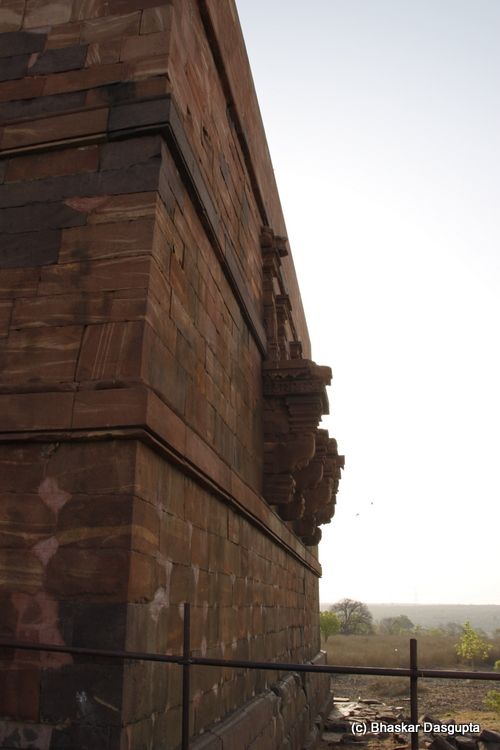
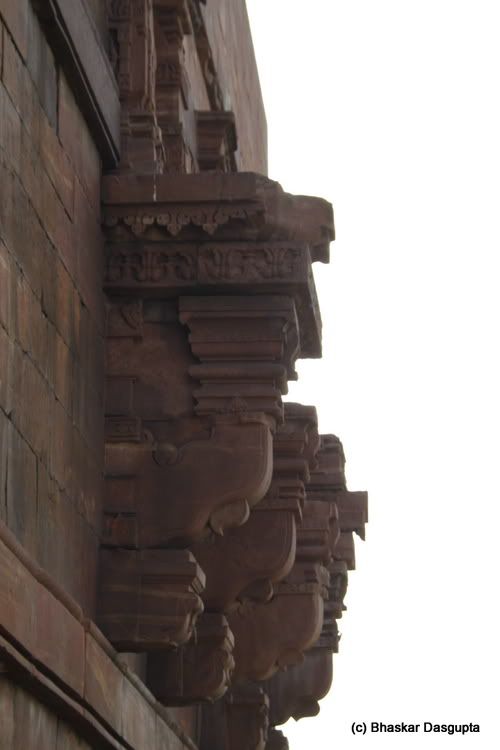
On the right hand side of the temple, we have this fake balcony. 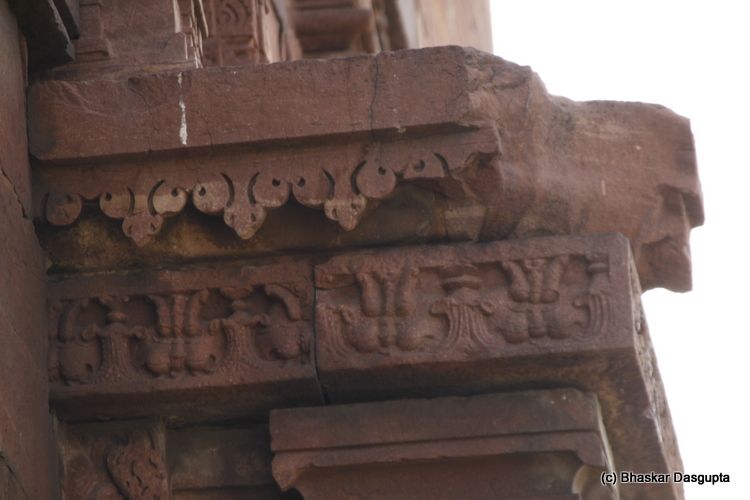
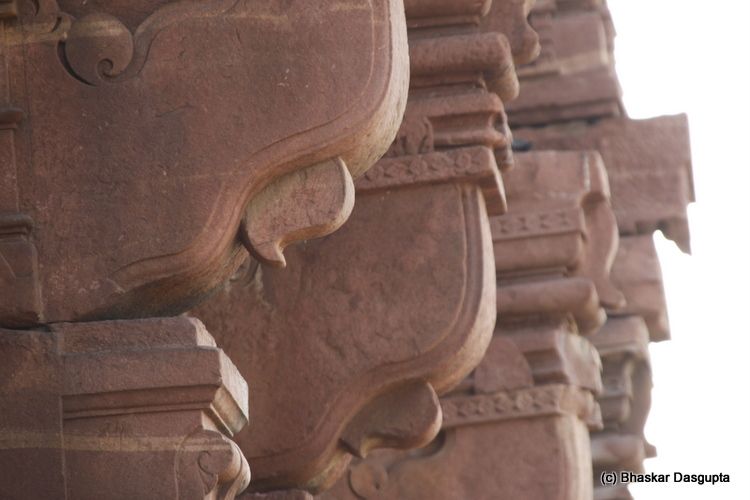
Its quite intricately carved but from what I understand, this just contained some statues, sadly no longer in existence. But there are quite a lot of them in the front of the temple. 
Some ruined statues on blocks on the floor.
The left hand side and the right hand of the gate are massive with giant stones. Niches have been carved into the stone presumably to contain statues. Some statues are left on some of the pillars. What an imposing sight. 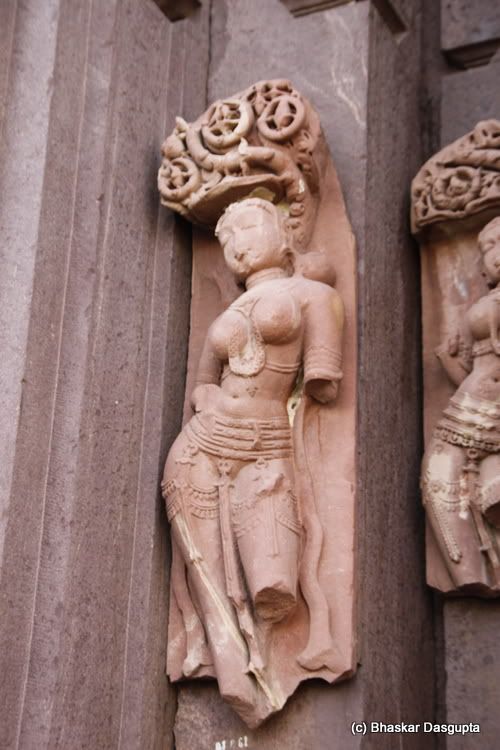
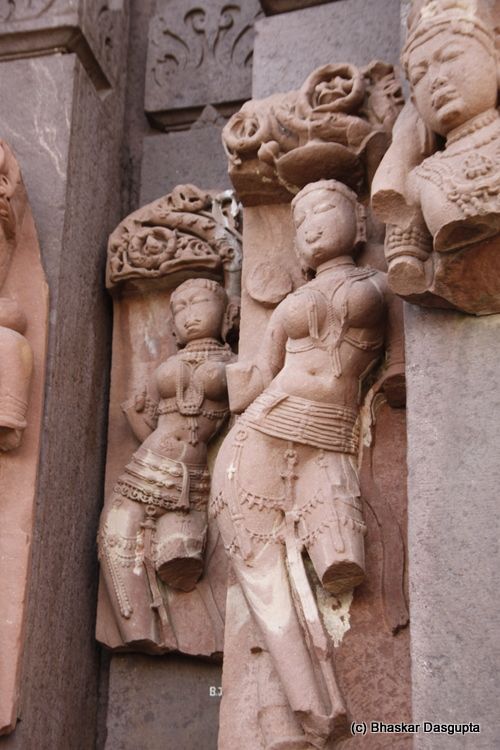
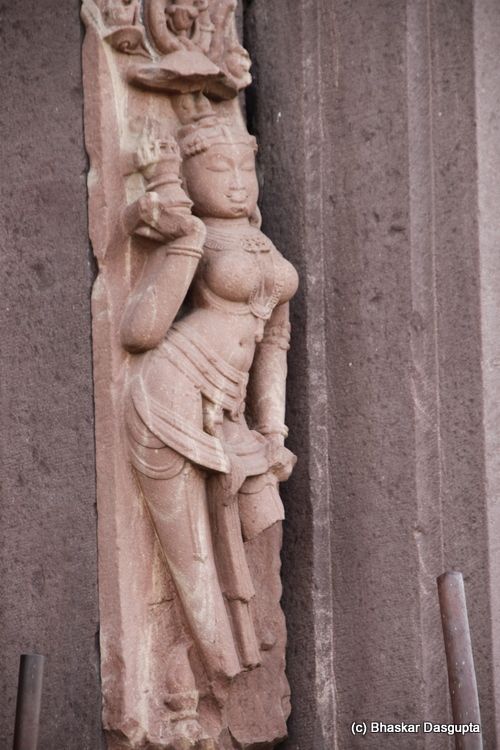
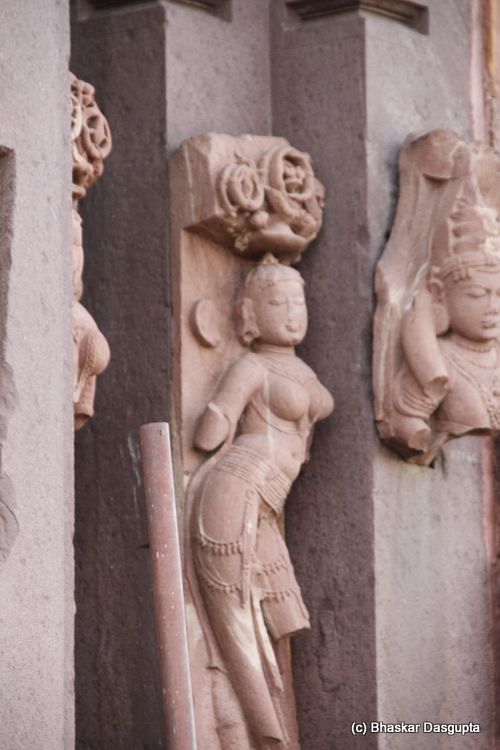
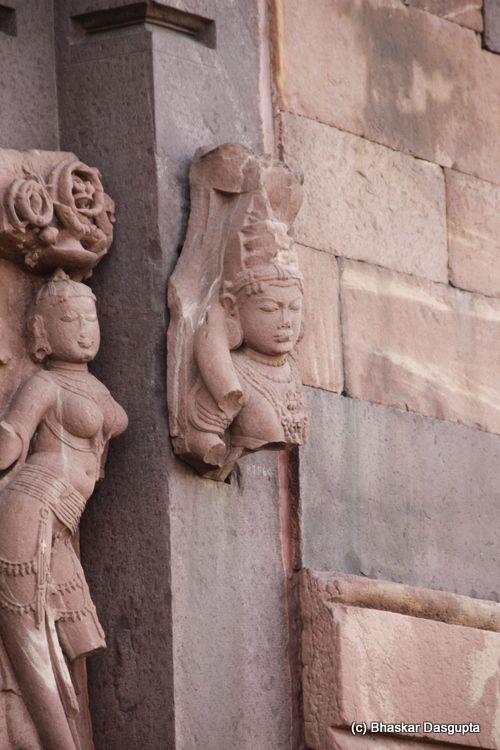
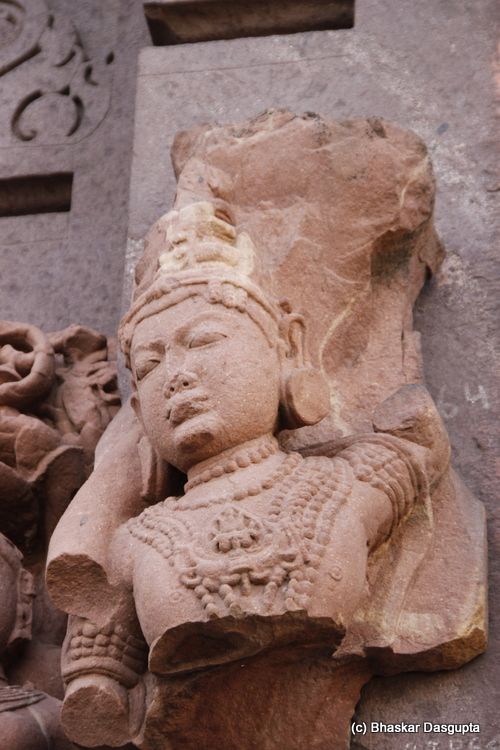
The statues on the facade are representations of two rivers, Ganga and Yamuna. As you can see, most of them have been disfigured or destroyed. Not many are left either.

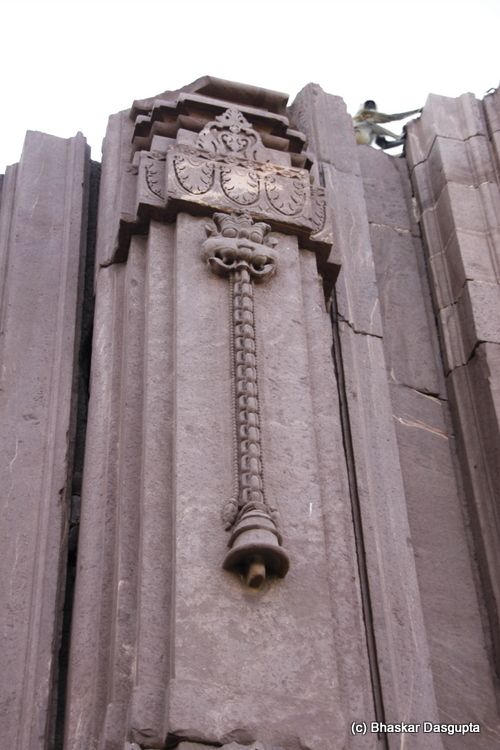
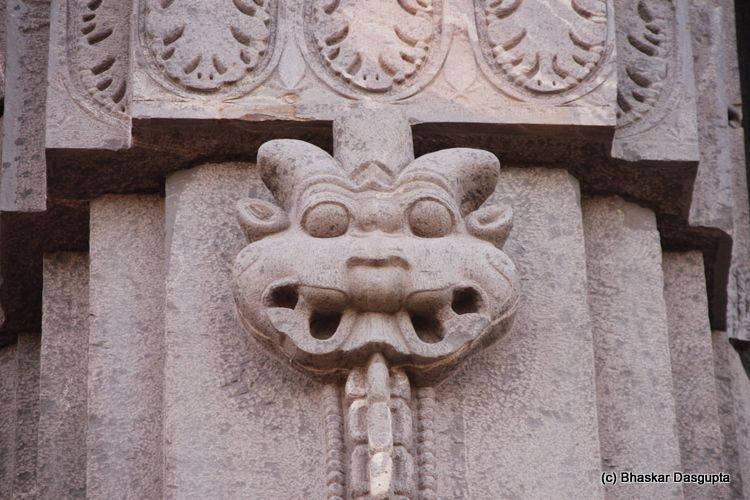
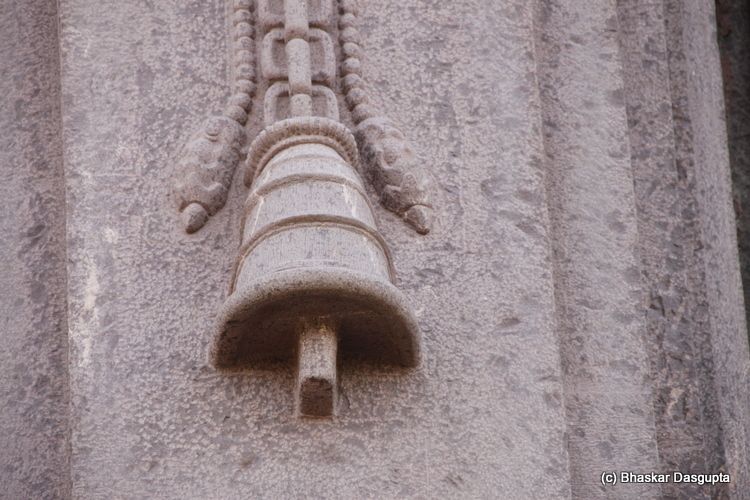
Both columns have this carved bell structure with a ferocious demon on top.
See what I mean? these niches were carved into the pillars and were presumably for the backs of the statues to slot in. You can see the marks of the stone mason’s, they are so fresh, almost like they were made yesterday instead of more than 1000 years back. Extraordinary. 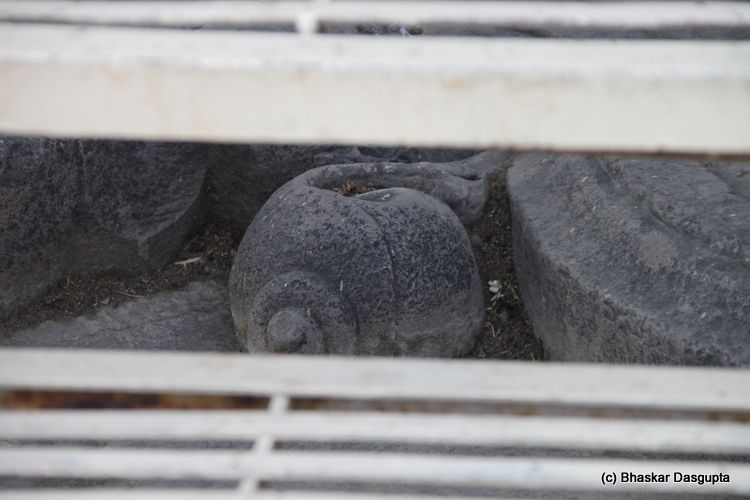
At the bottom of the stairs, we have these extraordinarily highly carved shells. 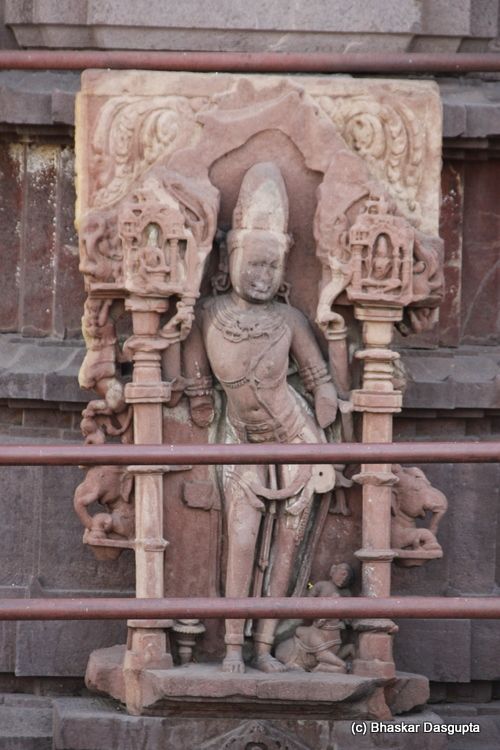
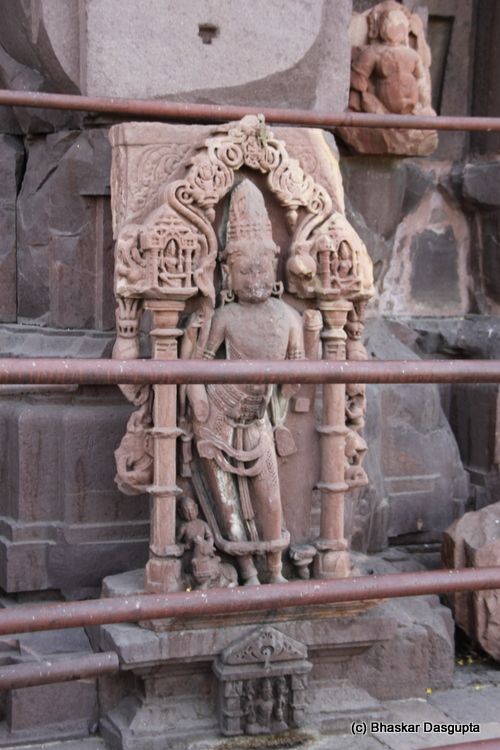
Two carved statues of Shiva with lovely pillars. 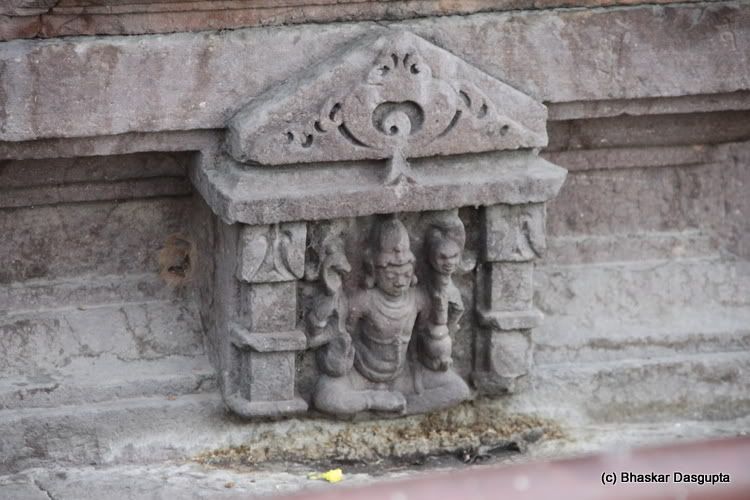
Below these, there is another statue of Shiva I think. Sitting in a cross legged fashion. 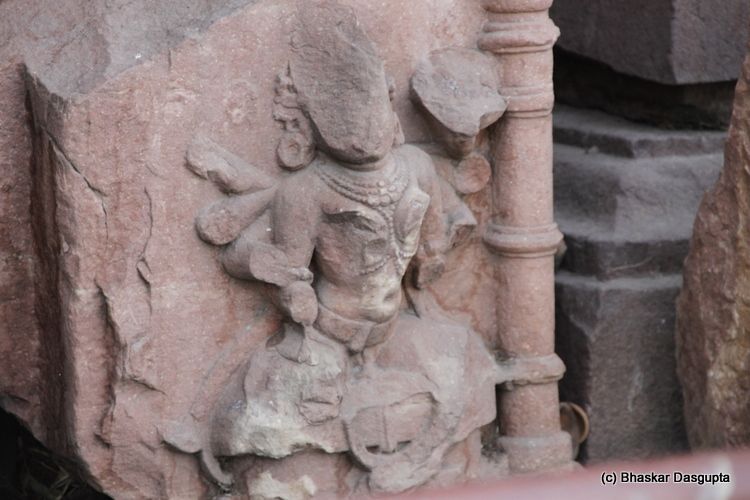
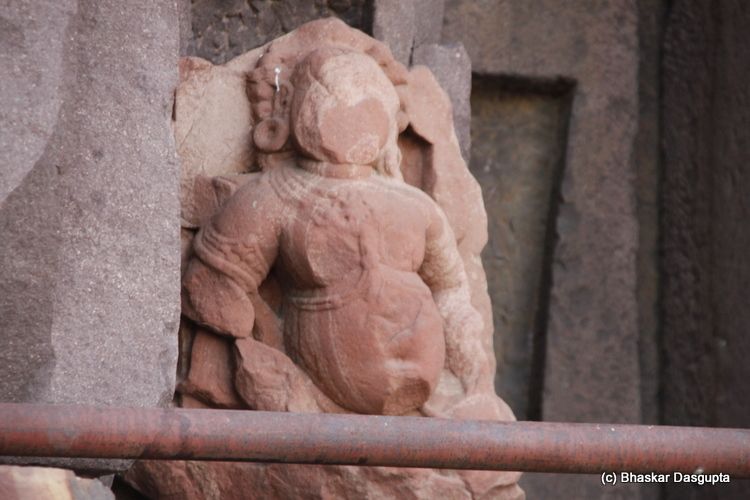
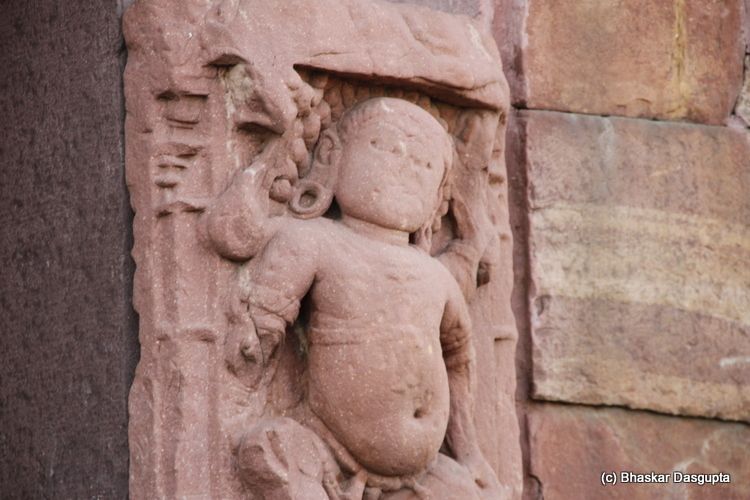
Some highly corroded and some defaced statues at the bottom. 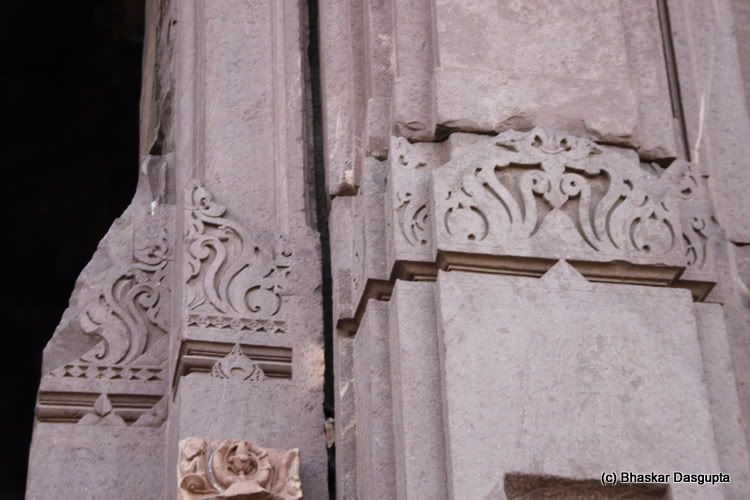
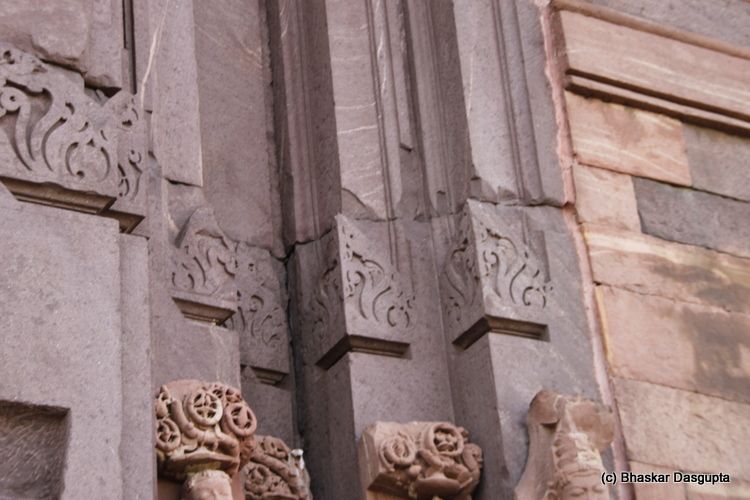
The pillars were made up of long big huge stone pillars but they were highly carved and looked very light. It must have been carved in situ after being dragged over the ramp. The two colour stone made it stand out. Lovely. Each of these pillars are 35 feet in length, 5 and 5 feet in width and depth. Imagine dragging them across and then laying them down. 
A waste bin made up of rubber sheets. Eye-catchingly bad. 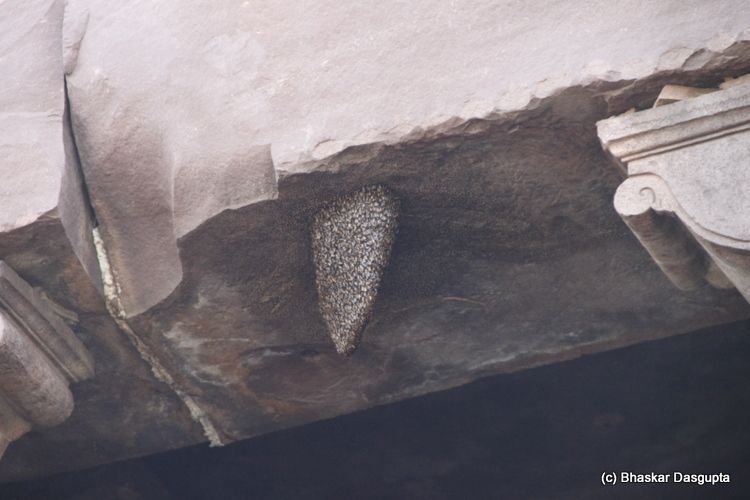
On the giant lintel, you can see a bee hive. This I remember from my childhood, there were always bees here. Some of these lintel stones were 70 tons each. Imagine dragging them up and then laying them so finely. Hardly any gaps between the stones and that gap is filled with limestone mortar. 
Walking up and looking to the right, you can see the giant stone hinge which would have been designed to hold the wooden door. And a monkey is peeking down. Plus two statues also peering down. 
The stairs were held together by these giant staples. I am amazed at how these guys worked so well together to create massive temples with rudimentary technology but hey, it worked, and they still are there. You can see how the stones were notched together and then stapled further.
The full entrance to the temple.

Another view of the left hand side lintel and the top stone. Highly carved but obviously not finished. Can you see how the right hand side is carved but the left hand side of the second layer is still unfinished? Extraordinary craftmanship. And of course the monkeys. The monkeys deserve a special essay of their own so the next one is for these cheeky monkeys.

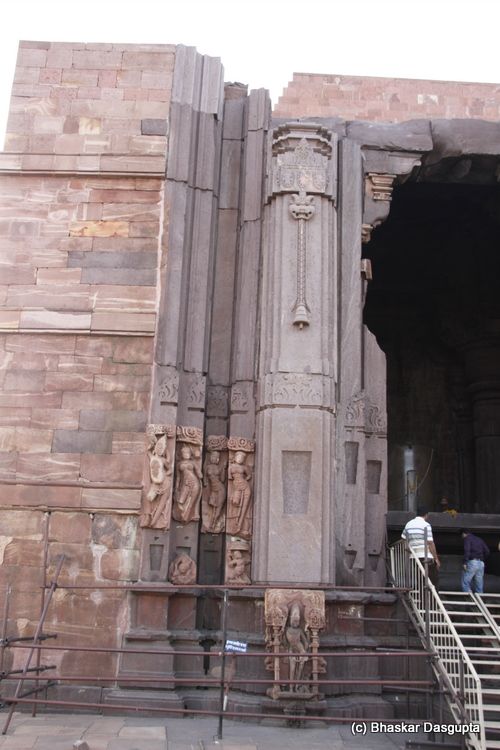
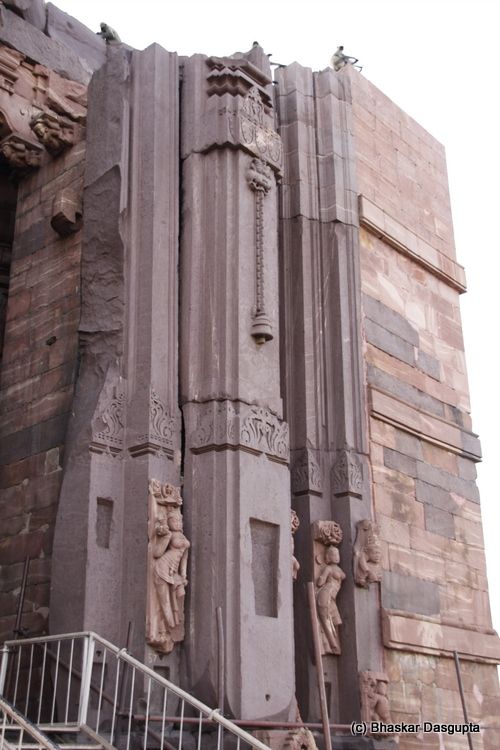

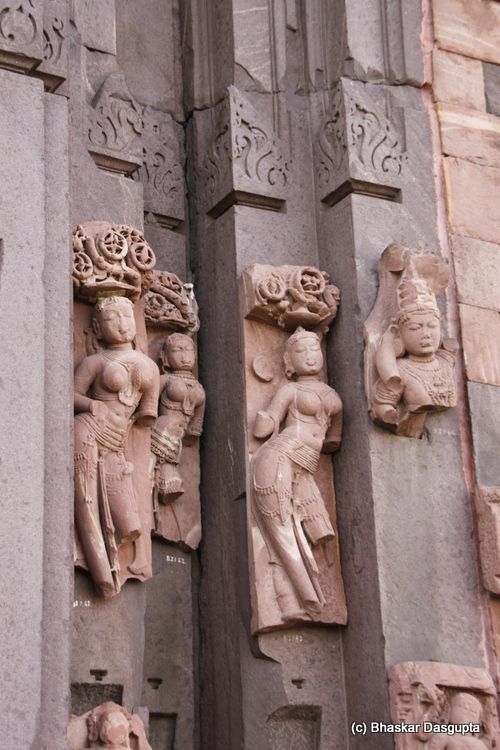
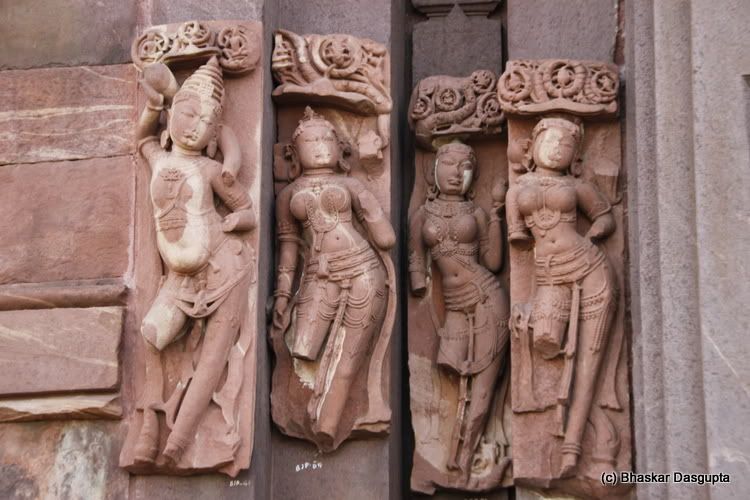
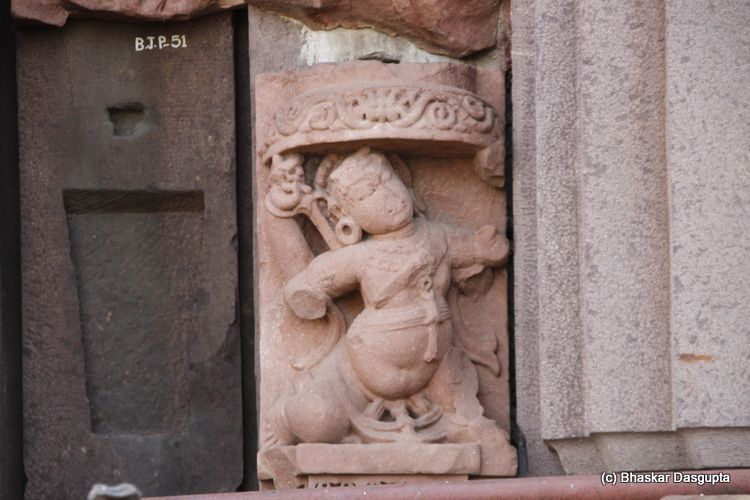
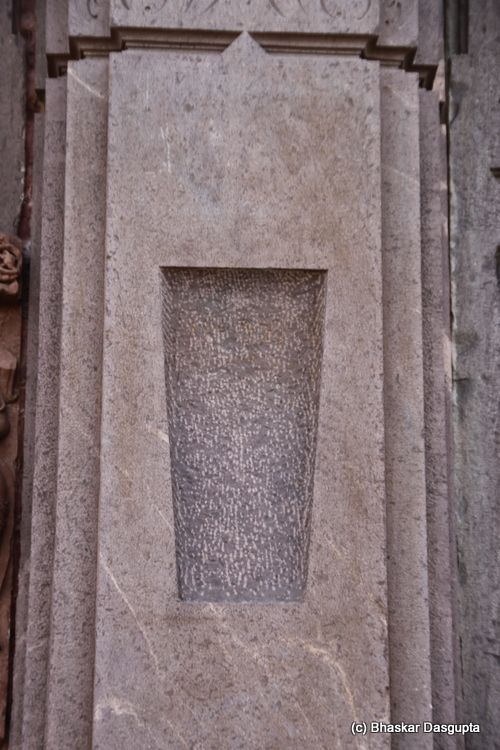
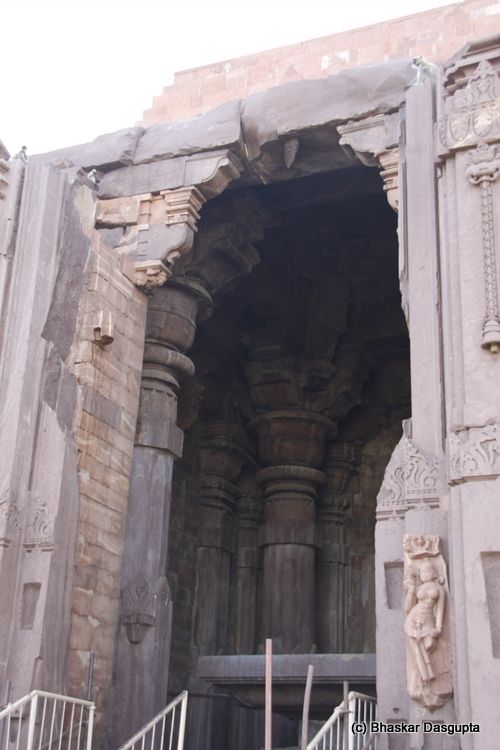
No comments:
Post a Comment